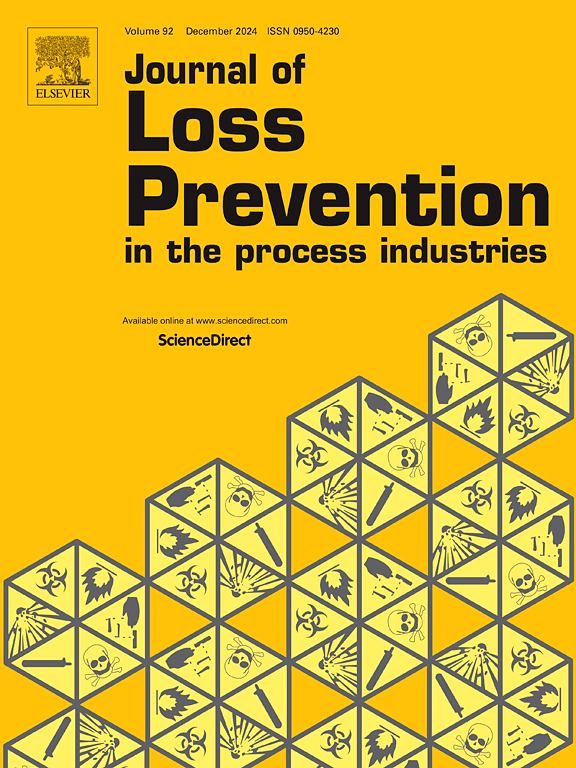Small-scale BLEVE: Near-field aerial shock overpressure and impulse
IF 4.2
3区 工程技术
Q2 ENGINEERING, CHEMICAL
Journal of Loss Prevention in The Process Industries
Pub Date : 2024-10-19
DOI:10.1016/j.jlp.2024.105463
引用次数: 0
Abstract
This paper presents an investigation into one of the most damaging hazards associated with Boiling Liquid Expanding Vapor Explosion (BLEVE), specifically focusing on the near-field overpressure and impulse effects. Experiments were conducted at a small-scale to study the overpressure and impulse using aluminum tubes with a diameter of 50 mm and a length of 300 mm. The tubes were filled with pure propane liquid and vapor. The controlled variables, in this work included the failure pressure, the liquid fill level, and the weakened length along the tube top. These variables control the strength of the overpressure characterized by the peak overpressure amplitude, duration of this overpressure event, and the resultant impulse. Notably, these experiments at a small scale included experiments with a 100 % liquid fill level. This further confirmed that the vapor space is the main driver of the lead overpressure hazard. High-speed cameras and blast gauges effectively illustrated the progressive formation of the shock wave in both temporal and spatial dimensions. Furthermore, various predictive models available in the literature are discussed in this paper and new correlations were developed to quantify the overpressure duration and impulse. The current analysis aims to predict the potential consequences of overpressure events during a BLEVE.
小规模 BLEVE:近场空中冲击超压和脉冲
本文介绍了与沸腾液体膨胀蒸汽爆炸(BLEVE)相关的最具破坏性的危险之一的调查,特别侧重于近场超压和脉冲效应。为了研究超压和脉冲,我们使用直径 50 毫米、长度 300 毫米的铝管进行了小规模实验。管内充满了纯丙烷液体和蒸汽。在这项工作中,受控变量包括破坏压力、液体填充水平和沿管子顶部的削弱长度。这些变量控制着超压的强度,其特征是峰值超压振幅、超压事件的持续时间以及由此产生的冲力。值得注意的是,这些小规模实验包括 100 % 液体填充水平的实验。这进一步证实了蒸汽空间是铅超压危险的主要驱动因素。高速摄像机和爆炸测量仪从时间和空间两个维度有效地展示了冲击波的逐步形成。此外,本文还讨论了文献中提供的各种预测模型,并开发了新的相关方法来量化超压持续时间和脉冲。目前的分析旨在预测 BLEVE 期间超压事件的潜在后果。
本文章由计算机程序翻译,如有差异,请以英文原文为准。
求助全文
约1分钟内获得全文
求助全文
来源期刊
CiteScore
7.20
自引率
14.30%
发文量
226
审稿时长
52 days
期刊介绍:
The broad scope of the journal is process safety. Process safety is defined as the prevention and mitigation of process-related injuries and damage arising from process incidents involving fire, explosion and toxic release. Such undesired events occur in the process industries during the use, storage, manufacture, handling, and transportation of highly hazardous chemicals.

 求助内容:
求助内容: 应助结果提醒方式:
应助结果提醒方式:


